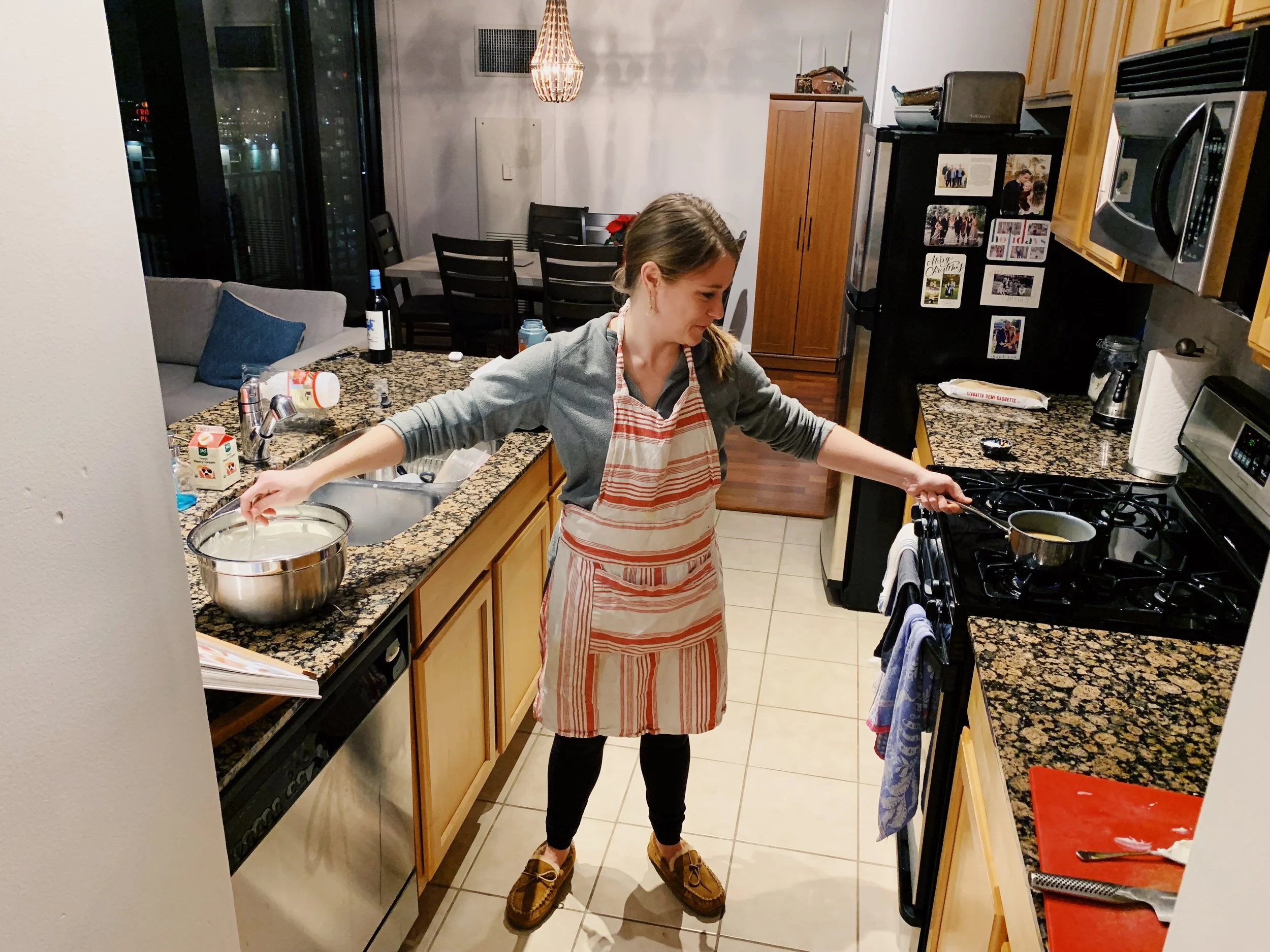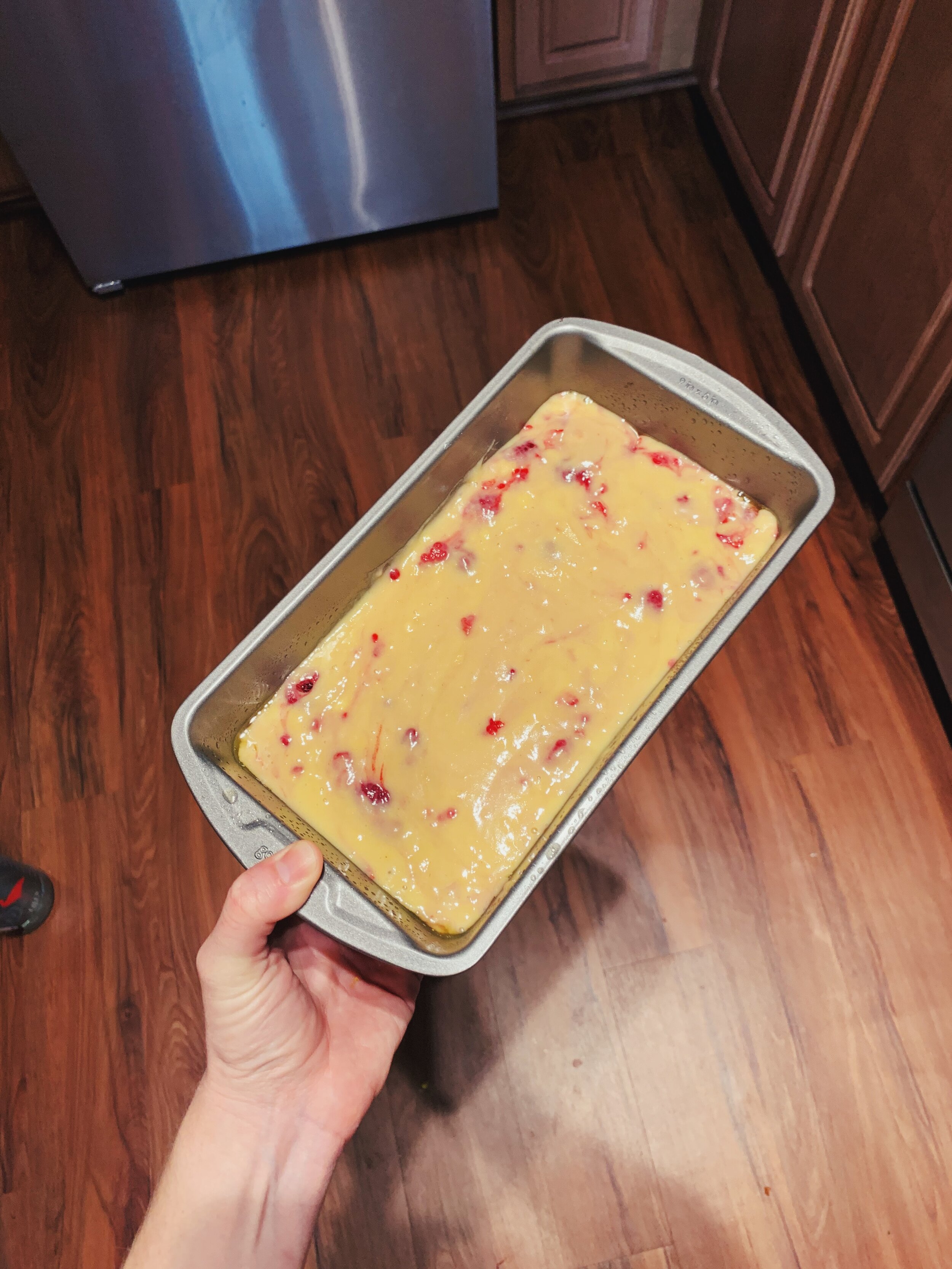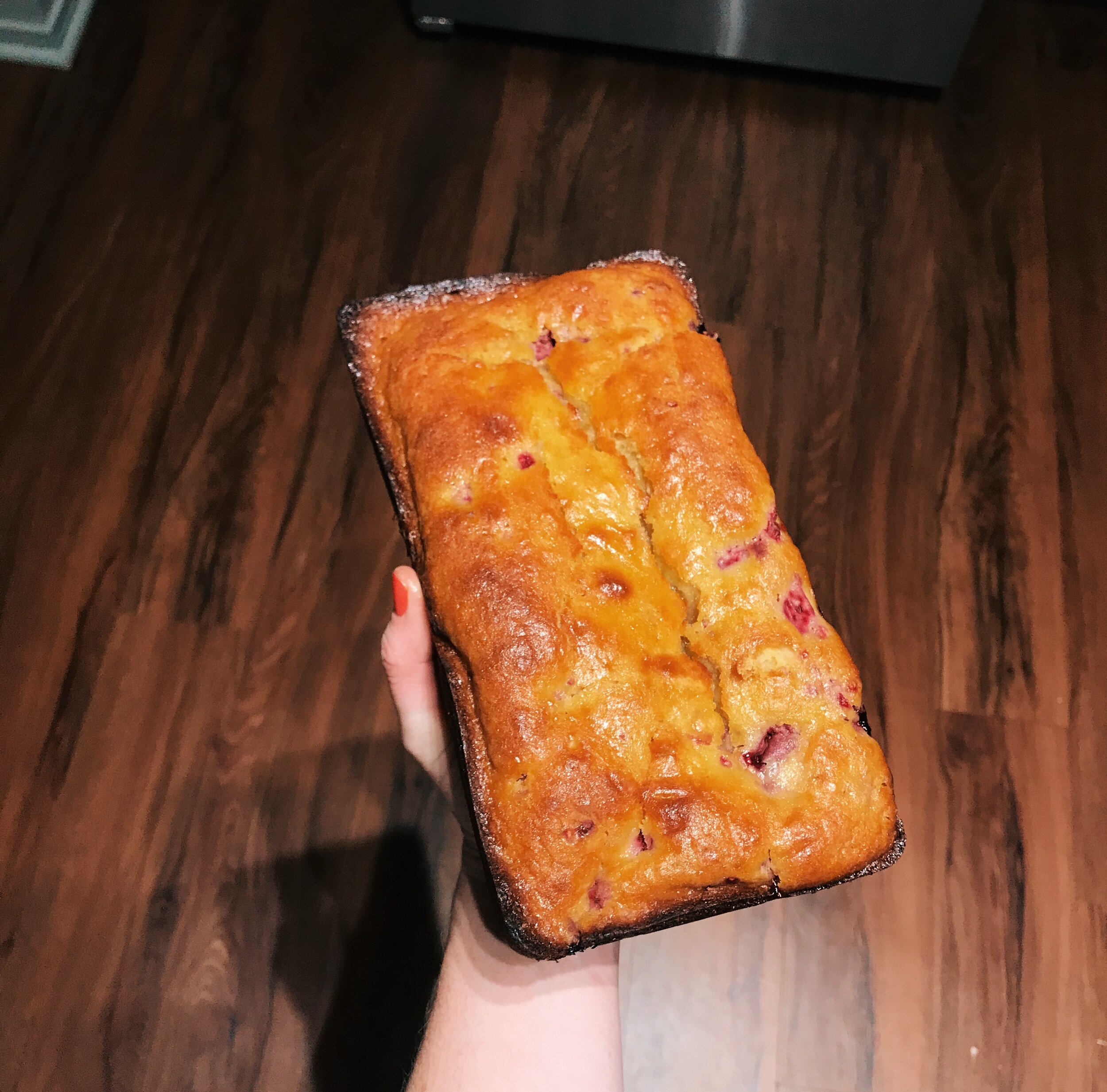I feel like I’m writing a minor, yet continuous confessional. As I blog about these final 40 recipes, I feel led to confess why I waited to cook them until the end. For some, it was unintentional. Others don’t spike my appetite. And others, like this panna cotta, are just plain intimidating. Or so I thought.
I was on my drive home from work and talking to my friend Margaret on the phone about all I planned for dinner. Slow-roasted chicken, garlic bread, arugula salad, and panna cotta for dessert. Off-handedly Margaret commented, “well at least panna cotta’s really easy.” “Right, yeah, definitely,” I replied. I still spent the rest of the drive home trying to mentally gear up for the tasks ahead.
Thankfully, Margaret was right. Panna cotta is on the easy side, it just requires patience. Step one, hydrate the gelatin packet in water. Alison tells us to sprinkle the gelatin over the water and let it soak. No mention of stirring. Given the gloopy look of things, I had the impulse to stir, but held back. Next, I combined buttermilk, honey, and heavy cream in a small pot and dumped in the clumpy gelatin mixture. Over low heat, I tried to dissolve the gelatin completely without letting the mixture rise to a simmer. This requires very frequent stirring and time. Alison doesn’t specify how long this takes, so if it helps, it took me about 20 minutes. Maybe it could have gone a tiny bit faster, but I was very conscious about not letting things simmer to avoid curdling. I didn’t feel like starting all over again.
In the meantime, I combined the rest of the ingredients - a dash of salt, more buttermilk, more heavy cream, and sour cream. Alison instructs us to lightly whisk them together so there are no clumps, but also no air bubbles. That’s a tall order, in my opinion. Especially as the sour cream wanted nothing more than to sink to the bottom and remain its clumpy self. I found myself with a fork, digging for bits of sour cream and trying to separate them against the side of the bowl. I think I got most of the clumps out?
Once the gelatin totally dissolved, I poured that mixture slowly into the bowl of many dairies and stirred to combine. I portioned them out in seven glasses and stuck them in the fridge. Alison says they need at least 1 hour in the cold. But I can say from experience that the longer they sat in the fridge, the firmer, and more panna-cotta like, they became. If you’re looking for an authentically firm panna cotta, without a more liquidy bottom, let them spend at least 4 hours in the fridge. I covered the ones we didn’t eat that night with saran wrap and enjoyed one even more the next day.
Finally, the raspberries. A truly great add. I would not skip them. Crushed raspberries mixed with a bit of honey and apple cider vinegar. That tiny bit of acid and sweetness were just what the gelatin needed to really pop. I love that the panna cotta has a subtle sweetness - recipes calls for only a half cup of honey. So the raspberries really bring the sweetness home.
189 recipes cooked, 36 to go.






























